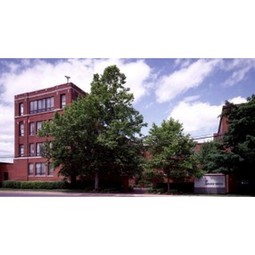Search Result.
Case Studies
80
 |
Connecting the EY Building
- Multiple A/C systems to be monitored through single central monitoring system. - Monitor Status of UPS, generator and switch gear status. Both digital and analog signals. - Monitor building for low voltage conditions and power usage. - Monitor for water leak detections. - Monitor the actual operation of HVAC units to include compressor amperages, refrigerant pressures, fan and filter status. - Implement open protocol Building Automation System for future multi-vendor expansion. - Monitoring and alarming of Space Temperature within a prescribed limits. The Ernst & Young's primary concern was a power loss and high space temperatures in the both the data center and LAN rooms. The UPS or generator would start and all A/C units would cycle on and off with no delay and this would put a drain on the power supply. E&Y sought to implement an integrated system that would not only effectively monitor, but also time out and stage the A/C system restart. They were also looking for a system that allowed for future expansion of the remote alarm monitoring. |
|
Building Supply Chain Visibility
B&Q, a major retail brand under Kingfisher plc, operates 359 stores in the UK and Ireland, offering more than 40,000 products. To support its retail program, B&Q needed to transform its logistics function, replacing its manual, mainly paper-based legacy systems, which were no longer suitable for a business that serves more than 150 million customers a year. This required a flexible warehouse management solution (WMS) to provide real-time information. B&Q wanted to ensure a seamless transition of IT functionality across a network that had been established for 15 years, and needed a solution that would provide it with the ability to manage more than 100,000 stock-keeping units (SKUs) across its sites, integrate stock supplied by approximately 600 different vendors, improve inventory accuracy with real-time information and clear visibility of orders, manage cross-dock and flow through platforms, and consolidate and pick stock for each store, which is dispatched daily via 500 trailer loads carrying around 45 pallets of products. |
|
 |
Building Smart IoT-Connected Railways
• Difficult environment. Communications equipment on trains must function properly in harsh conditions, such as environment temperatures ranging from -25°C to +85°C, according to the EU standard EN50155.• Railway regulations. All products in a train must adhere to strict standards, relating to working vibration, power consumption, and lifetime.• Lengthy process. Time to market in the railway industry can take years from concept to mass production, so product design requires a solid long term vision. |
Use Cases
2
 |
Building Energy Management
Building energy management systems (BEMS) provide real-time remote monitoring and integrated control of a wide range of connected systems, allowing modes of operation, energy use, and environmental conditions to be monitored and modified based on hours of operation, occupancy, or other variables to optimise efficiency and comfort. Building energy management systems can also trigger alarms, in some cases predicting problems and informing maintenance programmes. They maintain records of historical performance to enable benchmarking of performance against other buildings or across time and may help automate report writing. BEMS are often integrated with building automation and control (BAC) systems, which have a broaded scope of operations. |
 |
Building Automation & Control
Building automation and control (BAC) systems involve a combination of hardware and software that control aspects of a building’s systems, potentially including power, lighting and illumination, access and security, heating, ventilation and air-conditioning systems (HVAC), environmental sensors, elevators and escalators, and entertainment. Benefits of building automation and control systems can include efficient control of environmental conditions, individual room control, increased staff productivity, effective use of energy, improved equipment reliability, and preventative maintenance. For example, systems can provide information on problems with building equipment, allowing for computerized maintenance scheduling as opposed to reactive identification and management of issues. Building management systems are most commonly implemented in large projects with extensive mechanical, HVAC, electrical, and plumbing systems. Building management systems (BMS) are central to BAC use cases. Systems linked to a BMS typically represent 40% of a building's energy usage; if lighting is included, this number approaches 70% on average. BMS systems are thus critical components for managing energy demand. Improperly configured BMS systems are believed to result in the wastage of 20% of a typical building's energy usage, or approximately 8% of total energy usage in the United States. |

